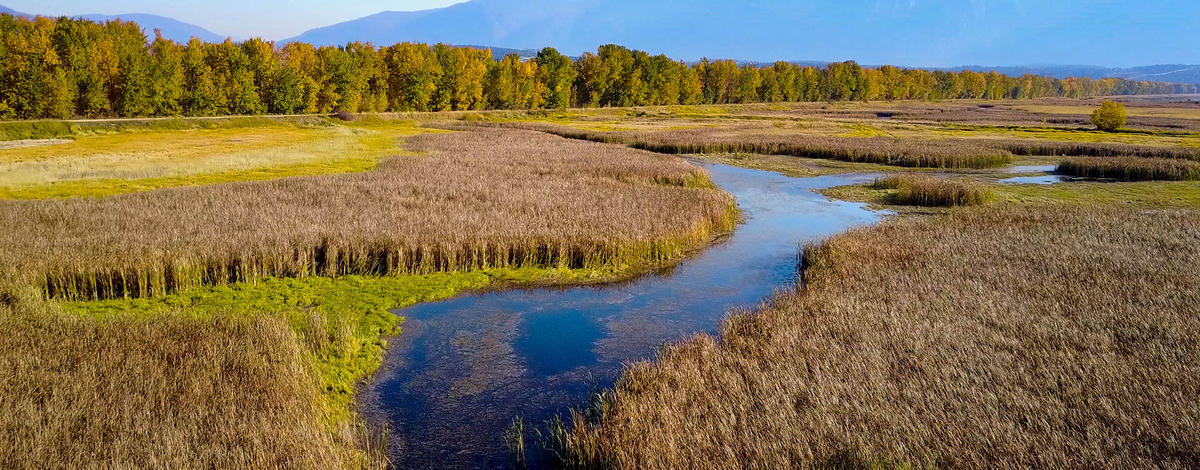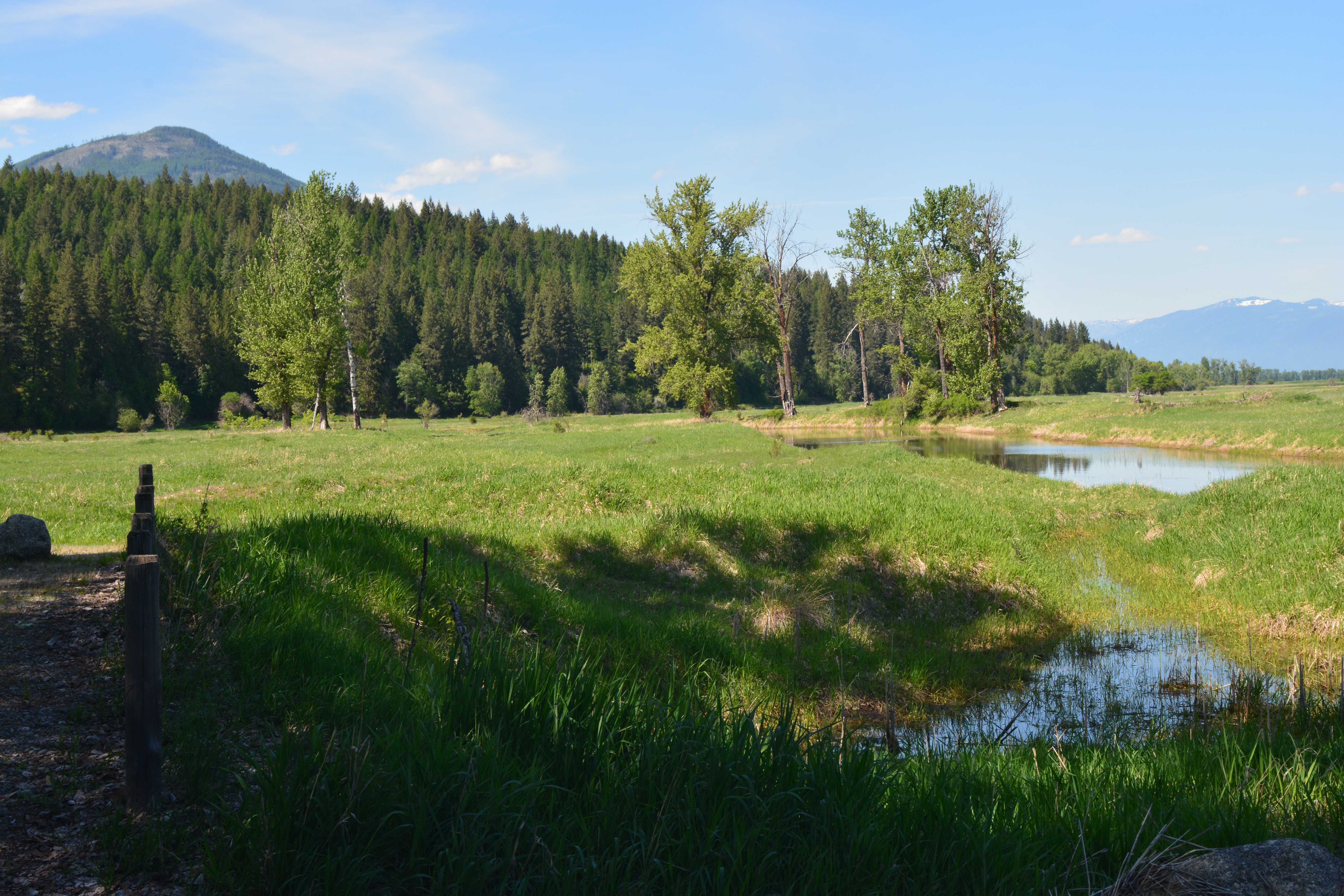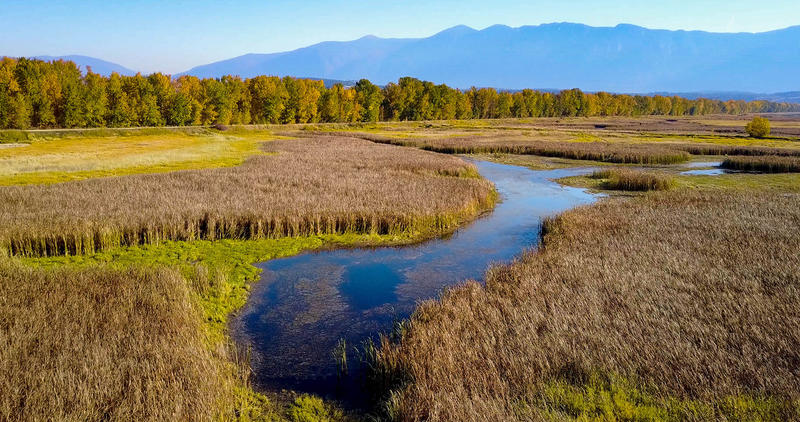Boundary-Smith Creek WMA hugs the Canadian border in the northernmost part of Idaho. Restored wetlands and floodplain habitats support a broad range of wildlife. Since the WMA was established in 1999, more than 237 species of insects, fish, amphibians, reptiles, birds and mammals have been observed. Whether you are a hunter, birder, or hiker, this WMA is a great place to visit.
Up to 6,000 migrating waterfowl visit this WMA each spring and fall. Managed and natural fluctuations in wetland water levels provide diverse, productive habitat for a variety of shorebirds and waterfowl during migration and breeding seasons. Deer, elk, and moose are all common visitors to the WMA, as are black and grizzly bear, mountain lion, coyote, beaver, mink, and river otter. Ring-necked pheasant and ruffed grouse are year-round residents and nongame species such as bald eagle, osprey, trumpeter swans, northern harrier, and black tern are seen regularly.
The WMA was active agricultural land from the early 1920s until 1999. A partnership of willing landowners, conservation NGOs, state and federal agencies worked together to purchase the property and re-establish the wildlife habitat that had been lost over the decades. It now consists of a mosaic of wetlands and historic floodplain, grassland and forest habitat types.
In 2018, Idaho Fish and Game and the Yellowstone to Yukon Conservation Initiative (Y2Y) began collaboration on a habitat project to restore 250 acres of forested lowland habitat on the WMA. The Idaho Panhandle Bees to Bears Climate Adaptation Project goal is to improve landscape resiliency for six Species of Greatest Conservation Need. It includes restoration of ephemeral flood cycles, create cool-air refugia, improve soil moisture, reduce air temperature, and increase native trees and understory plants. The project is to serve as an example of pro-active conservation actions that will assist species adapt to climate change.



